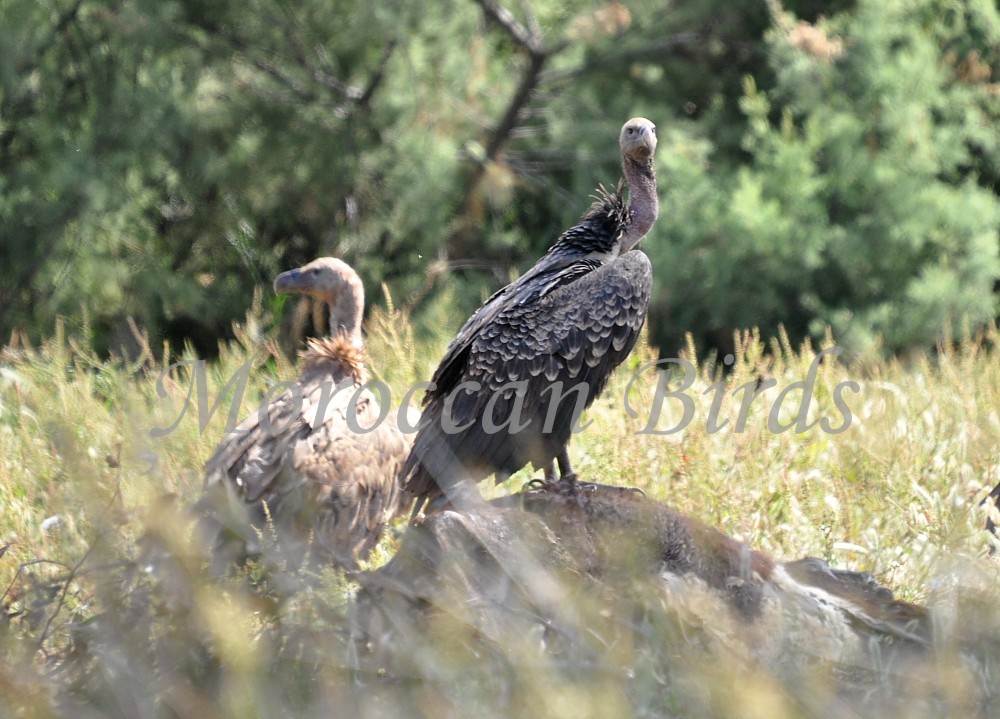It seems like these Rüppell’s Vultures are following our footsteps. This time, we didn’t even go to see them. They literally crossed our path!
Early morning today, we went to Smir wetland for our usual birding and also to survey the local heronry to see the progression of the breeding season of the Eurasian Spoonbill (Platalea leucorodia) and the Glossy Ibis (Pleagadis falcinillus).
Suburban ‘woodland’ near Tétouan
During the afternoon, we went to one of our preferred suburban forests that holds some interesting raptors (5 species in a relatively small area). It’s located just some 5 Km north of Tétouan. While watching and photographing some birds, we spotted two Griffon Vultures very high above our heads. Soon, other birds joined and there are now some 20 vultures. We didn’t wait long to spot a Rüppell’s Vulture (at 16:03). Rachid also took a quick photo for the record (the birds still very high).
The vultures, now numbering 35, were still circling high and after some minutes they moved to the south (towards Tétouan). We were pleased with our Rüppell’s Vulture and returned to the car. But after some minutes later, we saw them losing altitude and wanted to land some 1 Km from us. Woww! What a chance! We thought “there must be a carcass nearby”. We spent some 30 minutes searching for their location in the fragmented forest and also in the open habitat surrounding it.
Finding the carcass and the vultures
As we expected, we found the vultures actively feeding on a cow carcass. We counted 3 Rüppell’s and 32 Griffon Vultures (Gyps fulvus). We took photographs of the birds in different sittings (at the carcass, in the open field and some even on the trees…). It was difficult to record all three Rüppell’s Vultures in one photo because the group was moving around, but we managed to take some poor pictures showing all three together.
In late afternoon, the vultures split into 2 groups and some of them went to roost on the trees. A local Black-winged Kite (Elanus caeruleus) was seen mobbing some vultures that were roosting near his nest.
Observers: Rachid El Khamlichi (all photos) & Mohamed Amezian
Update:
Next day (25 May), with our friend Mohamed Karim El Haoua we went back to the site where we saw the vultures yesterday. At our arrival we found the vultures still there (3 Rüppell’s and 38 Griffons – 6 more than yesterday). But the biggest prize for returning to the site is finding a White-backed Vulture (Gyps africanus). This is a MEGA rarity in the Western Palearctic (see the link for photos and details).

